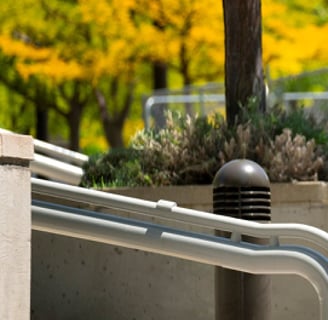Walkable Cities: How Pedestrian-Friendly Design Boosts Health and Well-Being
SUSTAINABLITYTRANSPORTATION


Cities are often thought of as bustling hubs of cars, buses, and other forms of transit, but a growing movement emphasizes designing cities for pedestrians. Walkable cities prioritize people over vehicles, creating spaces where walking is not only possible but also enjoyable and safe. These designs promote healthier lifestyles, foster community connections, and contribute to a sustainable urban environment.
This article explores how pedestrian-friendly urban design can significantly improve health, well-being, and quality of life.
1. What Are Walkable Cities?
Walkable cities are urban areas designed to encourage walking as a primary mode of transportation. Characteristics include:
Compact Layouts: Mixed-use neighborhoods where homes, shops, schools, and workplaces are within walking distance.
Accessible Sidewalks: Wide, well-maintained pathways free of obstructions.
Safe Crossings: Pedestrian-friendly intersections with crosswalks and signals.
Green Spaces: Parks, trees, and landscaping that create a pleasant walking experience.
Walkable cities prioritize human mobility and well-being, offering alternatives to car-dependent lifestyles.
2. Health Benefits of Walkable Cities
a. Physical Health
Walking is one of the simplest and most effective forms of exercise.
Reduced Chronic Diseases: Regular walking lowers the risk of heart disease, diabetes, and obesity.
Improved Fitness Levels: Pedestrian-friendly environments encourage daily activity.
Better Air Quality: Reduced vehicle emissions in walkable cities improve respiratory health.
b. Mental Health
Walking and access to pedestrian-friendly spaces enhance mental well-being.
Stress Reduction: Green spaces and walkable areas provide opportunities for relaxation.
Community Interaction: Walking fosters social connections, reducing feelings of isolation.
Cognitive Benefits: Physical activity, including walking, is linked to improved brain health.
c. Enhanced Safety
Well-designed pedestrian infrastructure reduces accidents and injuries.
Traffic Calming Measures: Narrow streets, speed bumps, and visible crosswalks enhance safety.
Better Lighting: Well-lit pathways make walking safer, especially at night.
3. Economic and Social Benefits
a. Boosting Local Economies
Walkable cities encourage spending at local businesses.
Higher Foot Traffic: Pedestrian-friendly areas attract more visitors to shops and restaurants.
Increased Property Values: Homes and businesses in walkable neighborhoods often see higher market demand.
b. Fostering Community Engagement
Walkable cities create spaces for people to connect.
Public Gathering Spots: Parks and plazas become hubs for social interaction.
Inclusive Design: Walkable environments cater to people of all ages and abilities.
4. Environmental Impact
a. Reduced Emissions
Walkable cities minimize reliance on cars, leading to lower greenhouse gas emissions.
Energy Savings: Encouraging walking reduces fuel consumption.
Cleaner Air: Fewer vehicles mean improved air quality for residents.
b. Urban Greening
Integrating greenery into walkable spaces supports the environment.
Carbon Sequestration: Trees and plants absorb carbon dioxide.
Biodiversity: Parks and green corridors create habitats for wildlife.
5. Features of Pedestrian-Friendly Design
a. Safe Infrastructure
Sidewalks: Wide, well-maintained pathways separate pedestrians from vehicles.
Crosswalks: Clearly marked and equipped with traffic signals or raised platforms.
b. Accessibility
Universal Design: Pathways accommodate strollers, wheelchairs, and other mobility aids.
Proximity to Amenities: Essential services like grocery stores, schools, and healthcare are within walking distance.
c. Green and Comfortable Spaces
Shaded Walkways: Trees provide shade and comfort during walks.
Benches: Resting spots encourage people to spend more time outdoors.
Water Features: Fountains and ponds enhance the aesthetic and cooling effect of public spaces.
6. Challenges to Walkable Cities
Despite their benefits, creating walkable cities can face obstacles:
Urban Sprawl: Low-density development makes walking less feasible.
Funding Constraints: Investments in pedestrian infrastructure can be costly.
Cultural Barriers: Car-centric mindsets may resist changes to prioritize walking.
Solutions include policy reforms, public-private partnerships, and community advocacy for pedestrian-friendly initiatives.
7. Examples of Walkable Cities
a. Copenhagen, Denmark
Car-Free Zones: The city center prioritizes bikes and pedestrians over cars.
Green Spaces: Parks and waterfront areas are easily accessible on foot.
Walkability Index: High scores for safety, accessibility, and comfort.
b. Melbourne, Australia
Laneways Revival: Redeveloped alleys are vibrant hubs for walking and socializing.
Sustainable Transit: Public transportation integrates seamlessly with pedestrian pathways.
c. Portland, USA
Compact Urban Planning: Mixed-use neighborhoods reduce reliance on cars.
Community Walks: Initiatives encourage walking as a social and recreational activity.
8. Designing the Future: Steps Toward Walkable Cities
a. Policy Advocacy
Governments can prioritize pedestrian infrastructure through policies and zoning laws.
Pedestrian Master Plans: Cities should create dedicated strategies to enhance walkability.
Car-Free Days: Encourage walking by temporarily banning cars in specific areas.
b. Public Engagement
Involving residents in the design process ensures their needs are met.
Community Workshops: Gather input from local populations.
Awareness Campaigns: Educate the public about the benefits of walkability.
c. Integration with Technology
Smart city tools can enhance pedestrian-friendly environments.
Wayfinding Apps: Help people navigate walkable areas.
Traffic Data Analysis: Optimize pedestrian crossing times and safety.
Conclusion
Walkable cities are more than just a convenience—they represent a commitment to health, sustainability, and community. By prioritizing pedestrian-friendly design, urban planners can create spaces that improve physical and mental well-being, boost local economies, and protect the environment.
As cities grow and evolve, designing for walkability offers a transformative vision for the future—one where everyone can step into a healthier, more connected, and sustainable urban world.

